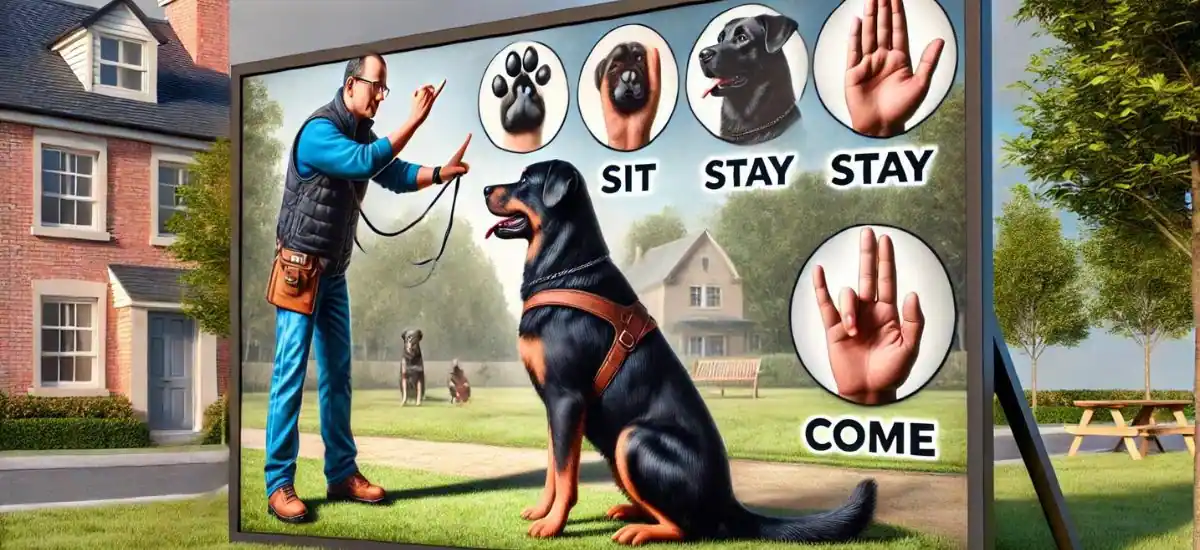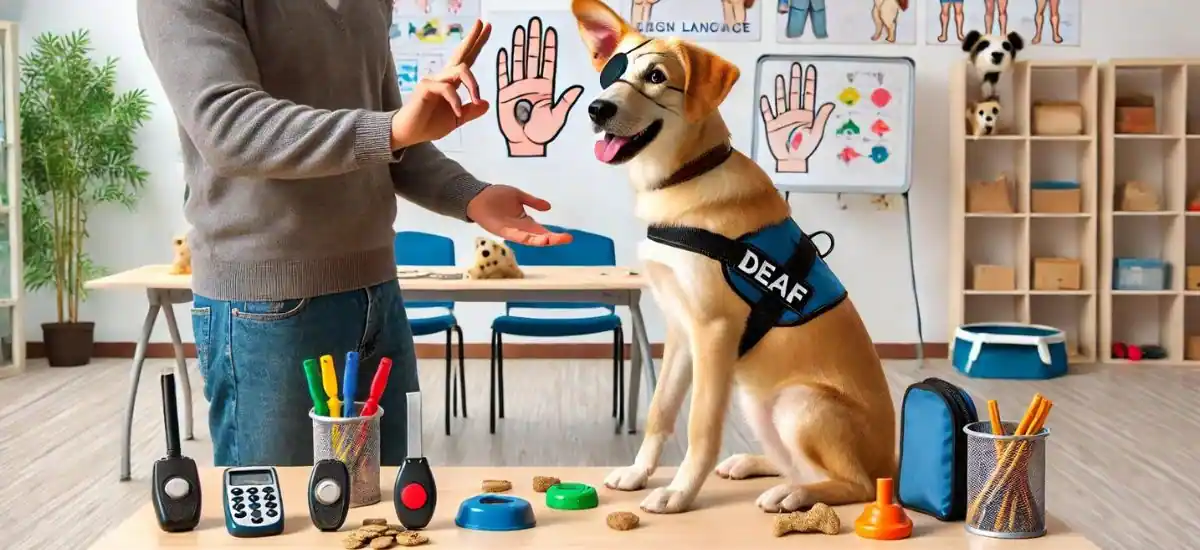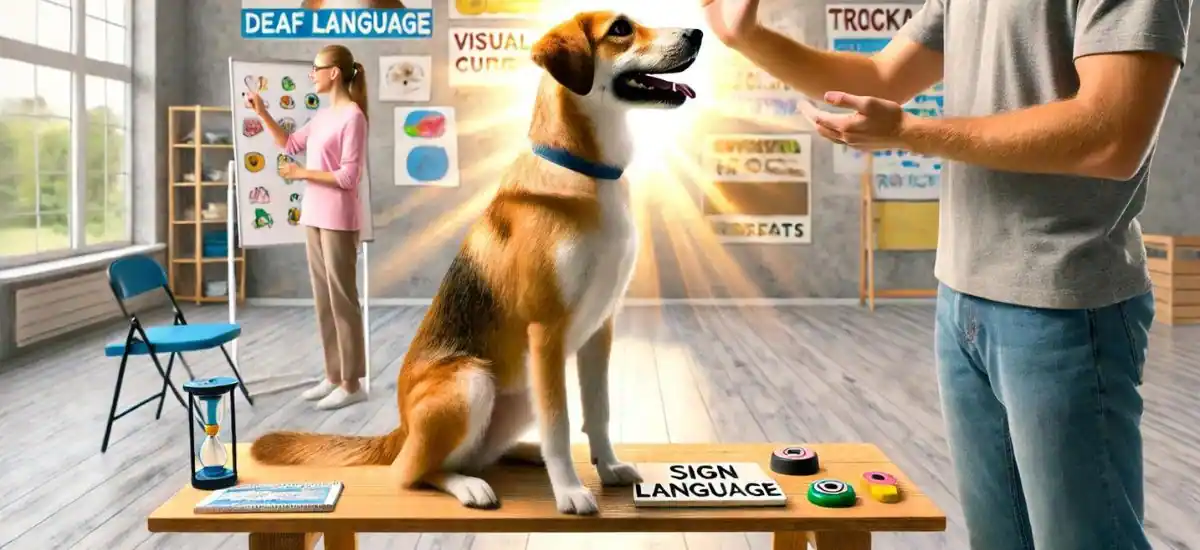Ever wondered how a dog with hearing challenges experiences the world? Imagine a world without the sound of a whistle, the call of their owner, or the bark of a friend. For deaf dogs, this is their daily reality. However, learning sign language can open a new world of communication for them, enhancing their ability to interact and respond in a way that many never thought possible.
Understanding Deafness in Dogs
Deafness in dogs can stem from several factors, each leading to a unique set of challenges and needs:
- Genetic Factors: Certain breeds are more prone to congenital deafness, often linked to their genes.
- Health Issues: Infections or injuries that impact the ear can lead to temporary or permanent hearing loss.
- Age-Related Hearing Loss: Just like humans, older dogs can gradually lose their hearing.
How to Spot Deafness in Your Dog:
- Lack of response to auditory cues.
- Startling easily when approached from behind.
- Excessive barking as they rely more on what they can see.
Table: Common Signs of Deafness in Dogs
| Sign | Explanation | Action Recommended |
| Unresponsive to sounds | Does not react to loud noises | Consult a veterinarian |
| Startling easily | Shocked when touched unexpectedly | Use visual cues for approach |
| Excessive barking | May bark more due to inability to hear self | Consider behavior training |
Basics of Sign Language for Dogs

Teaching a deaf dog sign language might sound daunting, but it’s similar to teaching a hearing dog commands using hand signals. The key lies in consistency and clarity:
- Basic Commands: Start with simple signs for basic commands like ‘sit’, ‘stay’, ‘come’, and ‘no’. These foundational commands pave the way for more complex interactions.
- Visibility and Distance: Ensure your dog can always see you when you sign, and practice commands at various distances and angles.
Training a Deaf Dog Using Sign Language
Training a deaf dog requires patience and understanding, but it’s incredibly rewarding. Here’s how you can effectively communicate with your four-legged friend through sign language:
- Get Their Attention: Use a visual cue or a gentle touch to get your dog’s attention before giving a sign. This can be as simple as a wave or lightly tapping their back.
- Clear and Consistent Signs: Use distinct signs for each command and be consistent with them. Dogs are great at reading body language, so clear signals will make training easier.
- Positive Reinforcement: Just like with any dog training, rewarding your dog for correct behavior is key. Use treats or their favorite toy to reward them after they successfully follow a command.
- Practice Makes Perfect: Regular practice is essential. Integrate sign language into your daily routine to help your dog understand and remember the signs.
Benefits of Sign Language in Enhancing Deaf Dogs’ Lives
Implementing sign language not only helps with basic commands but also greatly enhances the quality of life for deaf dogs:
- Reduces Frustration and Anxiety: Being able to communicate effectively reduces stress and frustration in deaf dogs, making them feel more secure and understood.
- Strengthens Bonds: The process of learning sign language can strengthen the bond between you and your dog. It’s a shared journey that builds trust and mutual respect.
- Enables More Interaction: Deaf dogs trained in sign language can interact more freely and confidently with their environment and other people, increasing their social engagement.
Tools and Resources for Teaching Sign Language to Deaf Dogs

To support your journey in teaching sign language to your deaf dog, several resources can make the process smoother and more effective:
- Books and Videos: There are numerous books and training videos dedicated to training deaf dogs. These resources often provide step-by-step visual guides that can be extremely helpful.
- Training Programs: Look for specialized training programs for deaf dogs. These programs are tailored to meet the unique needs of non-hearing canines.
- Apps and Technologies: Several apps can help you learn and track sign language commands, making training sessions more structured and productive.
Challenges and Considerations
Training a deaf dog in sign language comes with unique challenges. Here’s how you can navigate these waters:
- Visibility Issues: A deaf dog must see you to understand your commands, which can be a challenge in large areas or if the dog is distracted.
- Consistency is Key: Everyone in your household must use the same signs to avoid confusing your dog.
- Patience Required: Progress may be slow, and it’s important to stay patient and persistent.
Solutions to Overcome Challenges:
- Routine Training Sessions: Regular, short training sessions help reinforce learning and maintain your dog’s attention.
- Engage Their Other Senses: Use tactile signals like gentle tapping or vibrations as additional cues.
- Create a Visual-Friendly Environment: Ensure your home environment facilitates easy visibility and communication.
Frequently Asked Questions
Q1. How long does it take for a deaf dog to learn sign language?
Ans: It varies based on the dog and the consistency of the training, but many dogs start responding to basic signs within a few weeks.
Q2. Can deaf dogs participate in dog sports?
Ans: Absolutely! Deaf dogs can excel in sports like agility or obedience competitions, where visual cues are often used.
Q3. What should I do if my deaf dog doesn’t respond to sign language?
Ans: Consult with a professional dog trainer who has experience with deaf dogs. They can provide insights and specialized techniques that might be more effective.
Conclusion
Training a deaf dog to understand sign language is a deeply rewarding journey that can transform both your lives. It’s more than just teaching commands; it’s about opening a channel of communication that enhances your mutual understanding and strengthens your bond. Deaf dogs, like all dogs, thrive on connection and communication. By mastering sign language, you provide your pet with the tools to express themselves and navigate the world more confidently.





